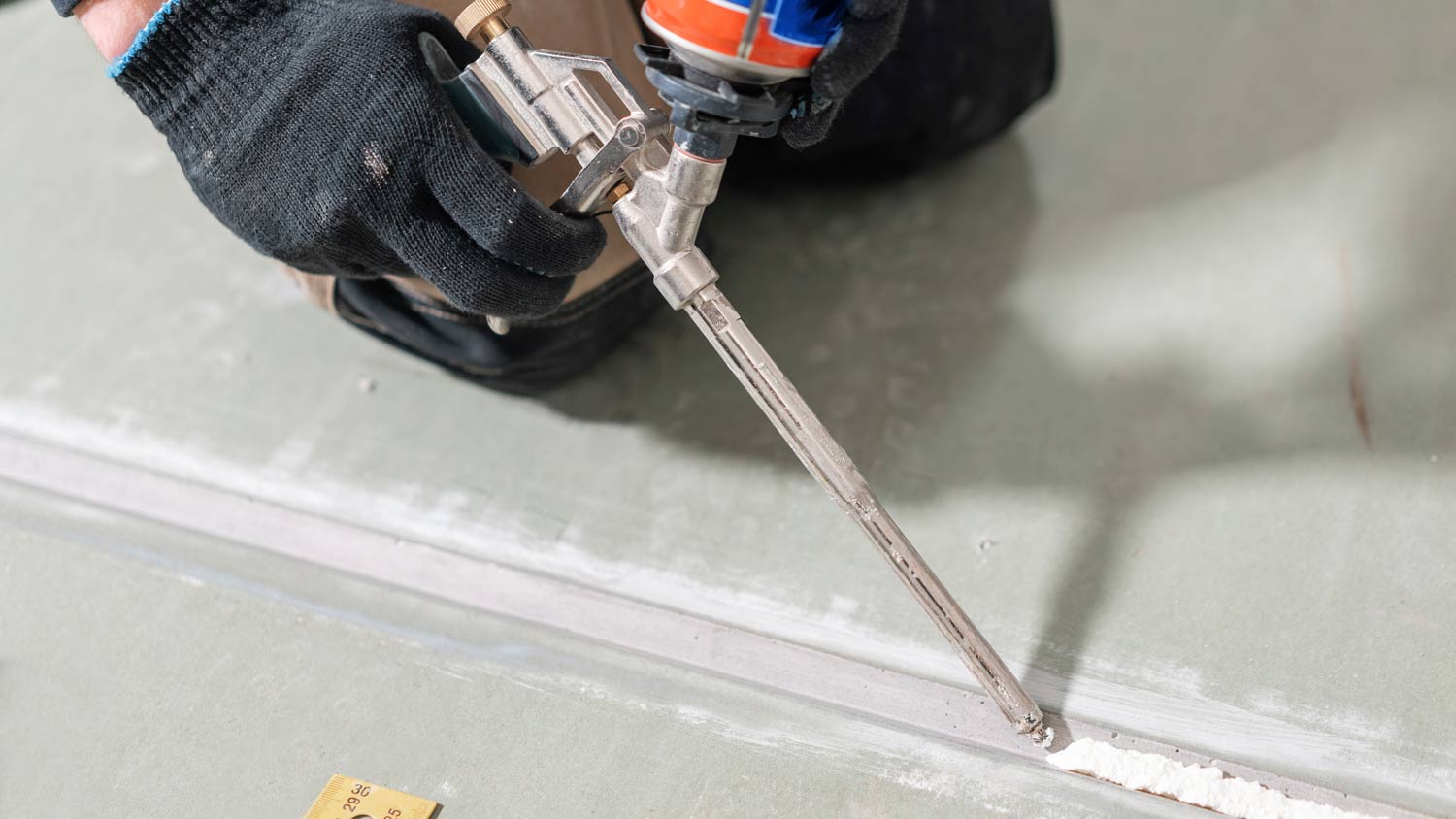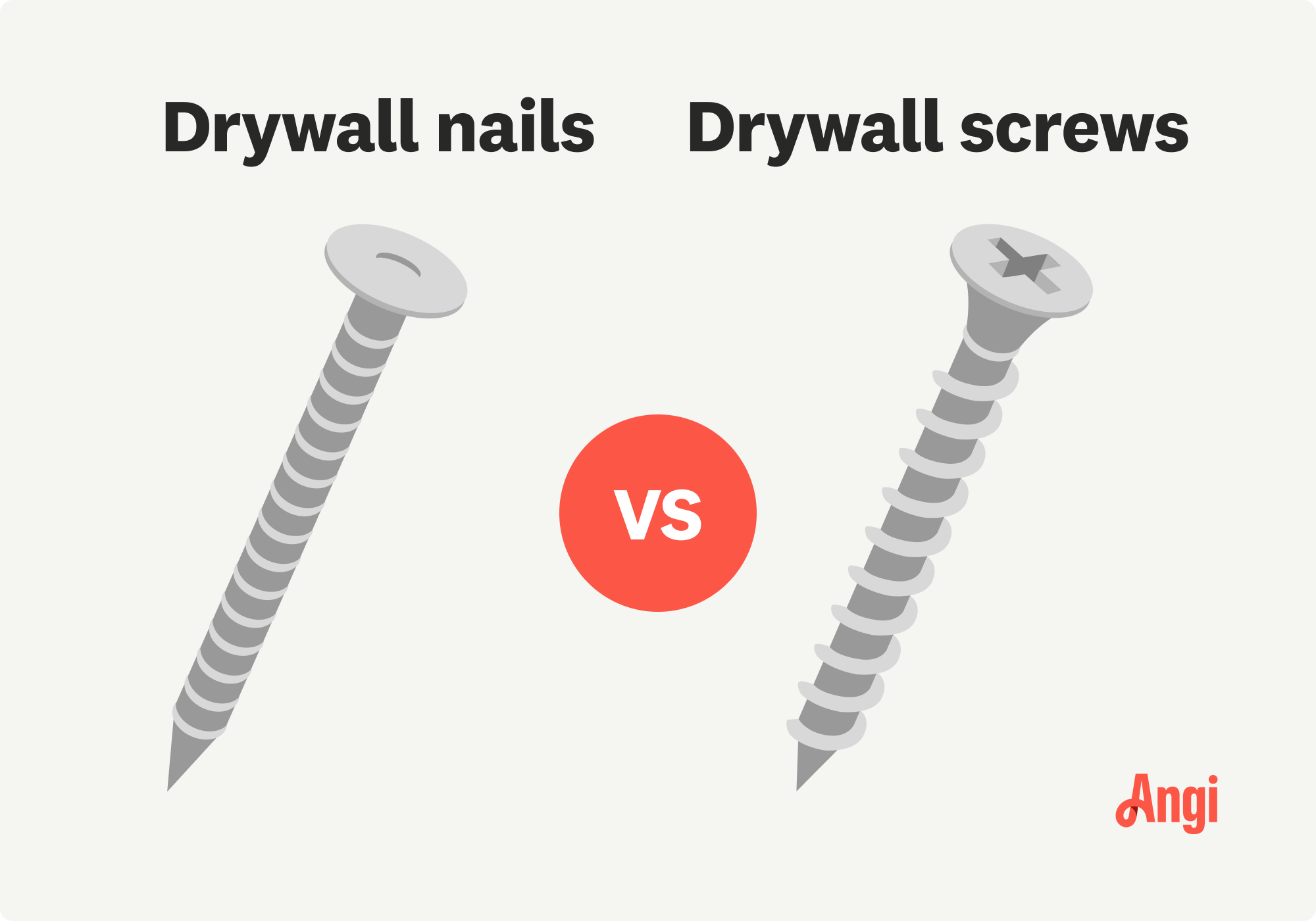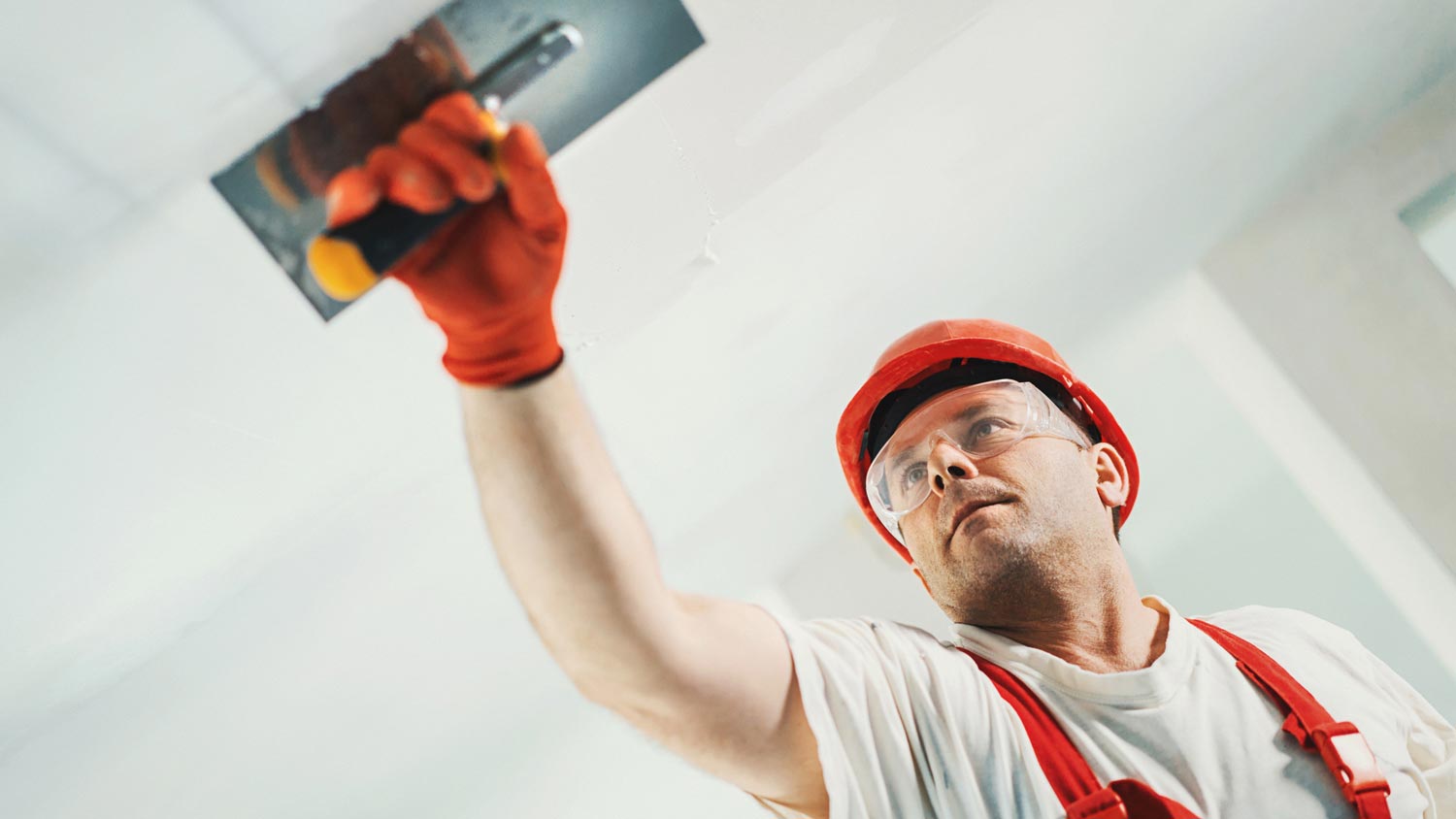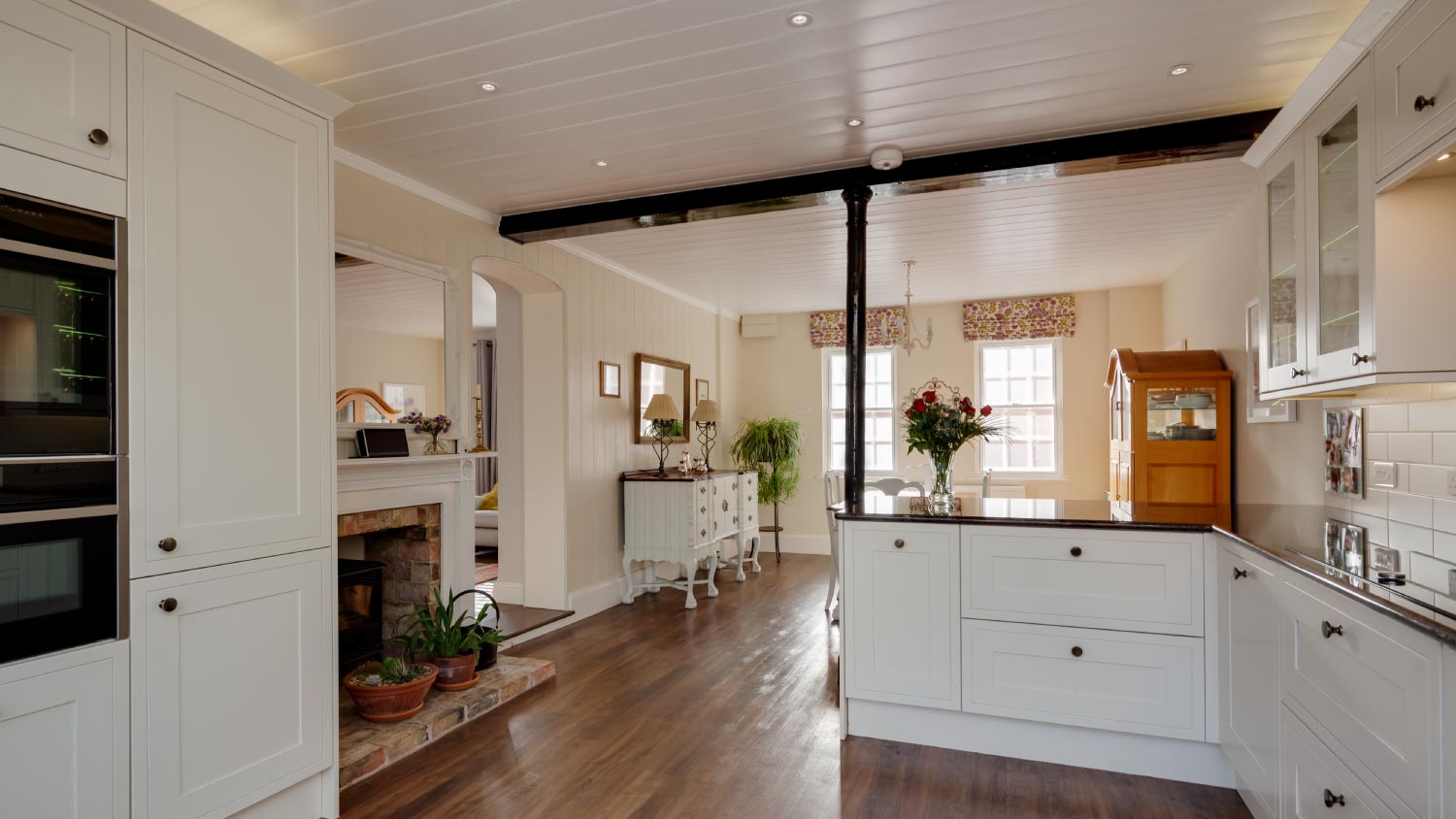
Installing drywall is the most common way to finish your home’s interior. Use this drywall installation cost guide to see what your project is likely to cost.
Don’t get too stuck on drywall adhesive


Yes, you can use drywall glue or adhesive to attach drywall to studs and joists without fasteners.
It makes the job go faster, prevents popping and cracking, and reduces noise.
Glues can be messy, cost more than fasteners alone, and are difficult to remove.
Alternatives are drywall nails and screws, furring strips, and combining adhesives with fasteners.
You can glue drywall, but you should consider your job specifics before starting.
Traditionally, drywallers nail or screw drywall panels to wall studs. But more and more contractors and DIYers are bucking tradition and using drywall adhesive. So, should you glue drywall? Here, we look at the pros and cons of using drywall glue to hang Sheetrock® so you can make the right decision for your home and your installation project.
When taking on this project, expect questions only a pro can answer. With our network of local pros, you'll get the job done and your questions answered—without the hassle and stress of doing it yourself.
When you’re deciding how to hang drywall, you may consider drywall adhesive. Also called drywall glue, drywall adhesive is a specially designed construction adhesive meant to attach drywall to framing materials like studs and joists. It bonds drywall tightly to your home’s support structure, which means you’ll need to use fewer screws or nails, and it can simplify jobs by making installation easier. Drywall adhesives also come in specialty formulations with added benefits like moisture resistance and noise reduction between rooms.
Drywall adhesive comes with pros and cons. When in doubt, a local drywall installer can guide you on whether it’s right for your project.
| Pros | Cons |
|---|---|
| Faster installation | Can be messy |
| Fewer fasteners | Higher material costs |
| Less cracking and popping | Difficult to remove |
| Noise reduction | Not for every job |

Gluing drywall has many advantages, which is why it is such a popular method. Here are the top reasons to consider using drywall adhesives for your next Sheetrock job.
Drywall glue can help speed up the process of a quality installation. With traditional fastener-only installation, you need to hold the drywall in place while you locate and install fasteners; with drywall adhesive, you will use fewer fasteners, so the job will go faster.
You may still want to use drywall nails or screws even if you choose adhesive, but you’ll only require a few. This can save time, money, and hassle. It also reduces potential weak points, since adhesive will uniformly secure drywall sheets to underlying framing or joists.
As housing materials and drywall naturally expand and contract with moisture and temperature changes, fasteners become loose and pop, or stick out. Pops, or small, round flaws in the drywall are the heads of drywall nails or screws pushing through the drywall and wall covering.
Drywall can also crack as it moves and shifts over time. Using drywall adhesive instead of fasteners alone allows the Sheetrock to move slightly, minimizing pops and cracks.
Drywall adhesive creates a tight seal between Sheetrock and wall framing, reducing sound transmission between rooms. If you have kids, a home office, or live in a multifamily building, gluing drywall can keep life quieter. Use this method in tandem with soundproofing materials to make it even more effective.
It’s fast, easy, and has long-term benefits, but using drywall adhesives does have some drawbacks.
Even if you haven’t used glue since elementary school, you probably remember how messy it can get. Drywall glue is no exception. You’ll need to apply the adhesive just right, or it will ooze out and make a mess on walls and floors. Moving or shifting crooked panels will also be messier and harder because the glue starts to adhere right away.
Drywall adhesives add to the overall cost of jobs. Nails and screws cost less, so if you use adhesive, factor it into your budget. While drywall glue isn’t expensive, you will need to use a lot of it to get a good bond, so the price can add up, especially with large rooms or a lot of square footage.
Drywall adhesive works well, but it also makes removal a pain. If you need to reposition or replace glued drywall, it will be challenging and time-consuming. Since the adhesive bonds strongly to drywall, it’s difficult to impossible to remove glued Sheetrock without damaging it, which can complicate renovations and repairs.
While drywall glue can be helpful on many jobs, it’s not a good fit for every project or situation. You’ll need to understand the product and your project to know if it’s the right solution. For example, drywall glue may not be best for ceiling installations or drywall you expect to replace or repair.

Drywall contractors have long used drywall screws and nails to secure drywall to framing, and there’s a reason fasteners are popular. You’ll need to determine what kind and how many screws per sheet of drywall, but they’re affordable, easy to find, easy to install. They also come in a variety of lengths and sizes, and you can adjust or remove them if necessary.
In rooms where it’s hard or impossible to attach drywall directly to wall studs or there’s a reason to leave a gap (such as leveling warped walls or making space for insulation), you might choose metal clips and furring strips instead of fasteners or adhesive. You’ll still get a solid framework for drywall, and you’ll be in control of the spacing and alignment.
Using a combination of adhesive and fasteners can give you the best of both worlds. When you do it right, you’ll find the adhesive bonds the drywall tightly to the studs and keeps air and sound from traveling between rooms while nails or screws give additional support and make it easier to adjust the panels during installation.
From average costs to expert advice, get all the answers you need to get your job done.

Installing drywall is the most common way to finish your home’s interior. Use this drywall installation cost guide to see what your project is likely to cost.

Skim coating drywall is a great alternative to replacement, and is often more affordable. Use this guide to estimate the cost to skim coat walls in your home.

Installing beadboard ceilings is a great DIY project. Learn what to expect cost-wise from this project, whether removing or covering a popcorn ceiling.

Texturing drywall can conceal imperfections and make your walls look a little more interesting. Want to try it? Learn how to texture drywall in this guide.

Hanging drywall on a ceiling can be a tough project because the drywall is heavy, and you must lift it over head. Use this guide to learn how to hang drywall on a ceiling the right way.

Studs can be found in a number of ways—you don’t always need a stud finder. Learn which methods are the most accurate, helping you find studs hidden behind a blank wall.